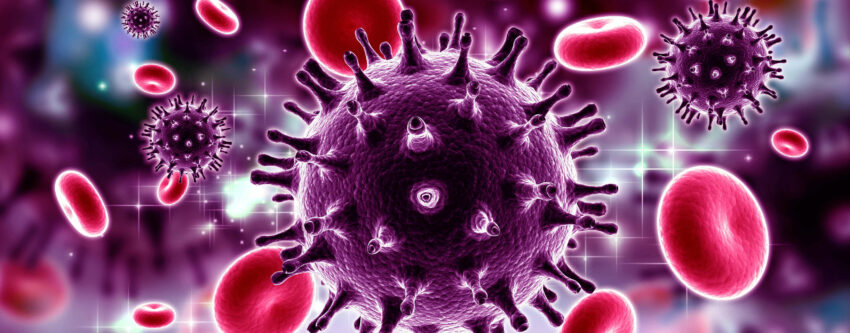 Please click here to discover L&R’s effective products for disinfection
Please click here to discover L&R’s effective products for disinfection 
Human immunodeficiency viruses (HIV) are lymphotropic lentiviruses from the retrovirus family and are enveloped. Experts call a viral infection pathway via T- or B-lymphocytes “lymphotropic”. There are two types of HI virus, HIV-1 and HIV-2, which are subdivided into several subtypes. If a cell is infected with HIV, it remains able to produce new viruses throughout its lifetime. HIV most likely originated as a so-called zoonosis, what means a virus that can be transmitted from humans to animals, and from animals to humans. At present, however, it only uses humans as a reservoir. Although chimpanzees can be infected with HIV-1, they do not become ill or only after a very long incubation period.
HI viruses can be transmitted from person to person through blood and other infectious body fluids. The infection most frequently occurs through unprotected sexual contact. Shortly before and especially during childbirth, an infected pregnant woman can transmit the virus to her child. After birth, the pathogen can be absorbed through the child’s oral mucosa during breastfeeding.
HIV is not transmitted via saliva, tear fluid, droplet infection, food, water, body contact or the shared use of cutlery or sanitary facilities.
Six days to six weeks after infection, in some infected people, the virus initially causes fever, lymph node swelling, skin rash, difficulty swallowing and sometimes diarrhoea. These early symptoms last for one to two weeks and are usually mild. After this phase, specific antibodies against HIV can be detected in the body for the first time, even if the affected person does not yet notice the infection.
The symptom-free stage can last for months or years. The individual course of the disease varies greatly. However, all patients suffer from a pronounced and irreversible disorder of the immune system. The most severe and often life-threatening manifestations of the disease are called “acquired immunodeficiency syndrome”, or “AIDS” for short. Approximately 70% of all patients develop a severe immunodeficiency with life-threatening infections eight to ten years after infection if the disease is not diagnosed and treated in time.
Since the HI virus can be transmitted via contaminated blood and blood products, it is important for HIV patients to inform healthcare staff before treatment, so as to reduce the risk for others. Risk of infection through injection utensils and medical utensils in particular exists if these are not properly cleaned or disposed of. After treatment of a patient with HIV infection, routine hygiene measures such as hand disinfection, disinfection of surfaces close to the patient and proper reprocessing of the medical devices used are adequate. Further basic hygiene measures may have to be applied during treatment, for example, wearing protective gloves in the event of possible contact with body fluids, or wearing protective gowns, mouth and nose protection and protective goggles if there is a risk of contact with contaminated droplets.
At least 7 days
The necessary spectrum of activity against HIV is: limited virucidal